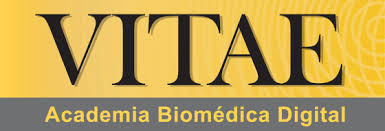Morfogénesis maxilo-mandibular
Palabras clave:
Osificación, Morfogénesis, Embriología maxilomandibular, Ossification, Morphogenesis, Embryology maxillo-mandibularResumen
El estudio morfológico de la cabeza comprende su Embriología. En su morfogénesis se aprecian diversas secuencias biológicas con aparición y posterior desarrollo de diversas agrupaciones celulares hasta su estadio definitivo, valiéndose de mecanismos propios: diferenciación, crecimiento, migración, inducción y apoptosis. La cabeza se forma del mesénquima de las placas laterales y paraaxiales del mesodermo, células de la cresta neural, y arcos faríngeos e incluye dos áreas anatómica, embriológica y funcionalmente bien diferenciadas: el esplacnocráneo y la cavidad craneana o neurocráneo. La mandíbula se origina a partir del primer arco faríngeo también llamado arco mandibular mientras que el hueso maxilar se forma a partir de los dos procesos maxilares que se expande hacia adelante separados por el proceso frontonasal dando origen a su vez los huesos palatinos, los malares y la parte proximal del hueso temporal. Ésta revisión tiene como propósito detallar la morfogénesis maxilo-mandibular así como también su osificación.
Abstract
The morphological study of the head comprises its origin or embryology. In its morphogenesis, several biological sequences can be seen with the appearance and subsequent development of various cell clusters until their definitive stage, using their own mechanisms: differentiation, growth, migration, induction and apoptosis. The head is formed of the mesenchyme of the lateral and paraaxial plates of the mesoderm, cells of the neural crest, and pharyngeal arches and includes two anatomical, embryologically and functionally well differentiated areas: esplacnocranium and the neurocranial cavity. The mandible originates from the first pharyngeal arch also called the mandibular arch while the maxillary bone is formed from the two maxillary processes that expand forward separated by the frontonasal process, giving rise in turn to the palatal bones, the malar and the mandible proximal part of the temporal bone. This review aims to detail maxillo-mandibular morphogenesis as well as its ossification.

